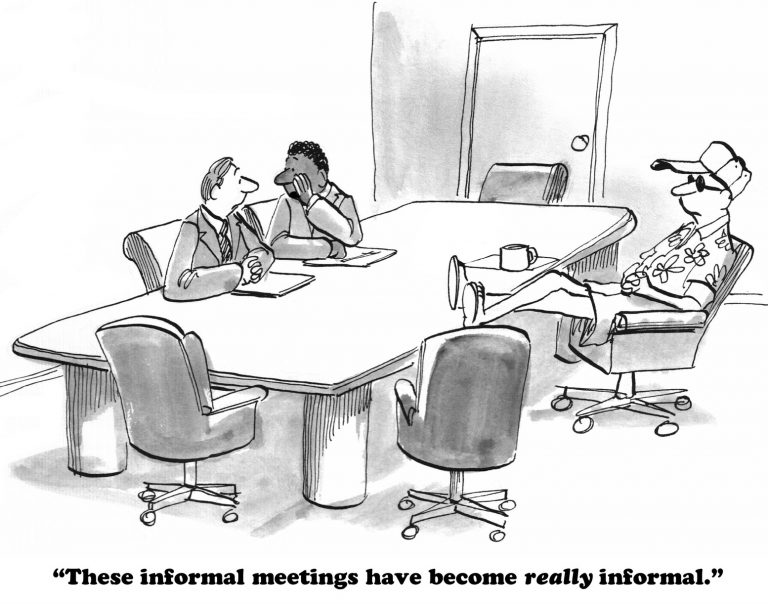
Back in the 1990s, a revolution began in management communications. A number of senior executives at, mainly, hotshot American companies noticed something peculiar.
Their colleagues, the top ten or fifteen managers in the company, were behaving strangely. At the lunch break, they would file off to the management dining room and sit at four-seater round tables. Almost every day, the same groups of four would join each other for lunch, often occupying the same table each time.
Something else. Senior people would routinely decline the offer to attend a meeting if they didn’t receive a formal invitation with an agenda attached. Even then, they’d sit through presentations, make a few polite comments at the end and get back to their desks as soon as the meeting showed signs of breaking up.
At around this time, a researcher called Ed Schon published a study that concluded: “Proponents of successful ideas work primarily through the informal rather than the formal organization.”
Light bulbs flashed above some very powerful heads. Almost overnight, decades of traditional management behaviour were swept away. The small dining room tables were replaced with long mess tables.
Management communications had been changed
Informal, no-agenda-no-minutes discussions sprang up everywhere and there was a whiteboard, or a pad of sketch paper on every wall for people to scribble ideas and suggestions.
At the end of presentations, fierce and challenging debates were encouraged.
Suddenly, engineers, factory supervisors, marketing execs, sales people, logistics managers – all had a story to tell, a point to make. This cross-fertilization of skills and experience led to some of the most innovative and exciting product developments in modern times.
Is the digital world dampening the innovative spark? Now that we can reach each other across the world at the press of a ‘send’ button, are we losing the excitement of no holds barred late night sessions where opinions were tossed in and tossed out, fresh felt markers squeaked across the boards and great ideas were born?
The creative interplay between smart people fighting for their ideas simply can’t be replicated by email, video conferencing or Skype calls.
The sense is growing that managements, with some notable exceptions in the tech industry, are creeping back into their shells, becoming more averse to risk and experimentation.
This would be a real tragedy. Without constant innovation, companies and entire industries will stagnate and die.
Markets reach saturation and revenues stagnate regularly and the only magic bullet that can reverse the decline is innovation.
This doesn’t happen in a vacuum. Leaders have to create the environment where anyone in the organization can put forward an idea and will be suitably rewarded for it.
Workers don’t have to wait for management’s encouragement. Many new products have been created by informal groups who come together to search for better ways to do things, either for the benefit of the employer, their customers or both.
Start modestly. Remember that most high-tech creations were not the product of a single mind. A modern cell phone, for example, incorporates dozens, if not hundreds, of inventions, each of which delivered a significant improvement over time.
The cell phone idea was first described in 1908, yet the first working prototype didn’t emerge until the 1970s.
Do don’t try to reinvent the world. Think about your organization’s customer offering. Try to develop some small improvement ideas and get a group together to try and build from there.
The most important thing to remember is that there’s no such thing as a bad idea. Sometimes you will find a diamond in a lump of coal.
If you liked, then please subscribe to our YouTube Channel for video content. You can also find us on Twitter, Facebook, Instagram and Linkedin.




